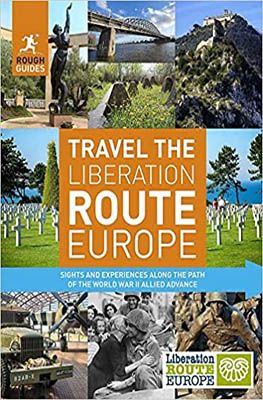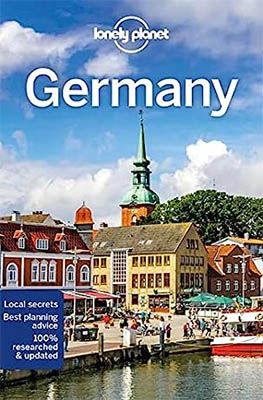Early in May, we did a tour of commemorative sites of the Battle of the Bulge (Ardennes Offensive) during World War II. The sites are located on some stages of the Liberation Route Europe (LRE): a network of 10,000 walking kilometres across Europe. Following this, we visited several memorial sites in the Eifel region in Germany. Here we got a broader picture of this black page in our history books from a totally different perspective. But just like through the Belgian and Luxembourg Ardennes, this visit too became a memorable journey through time. One that will also appeal to hikers less interested in history! Perhaps only because of the great variety of landscapes. All the ingredients for an impressive and, above all, fantastic holiday in this beautiful part of Germany.
In this blog ...
- The Eifel
- Second World War memorial sites in the Eifel
- The Vogelsang complex in the Eifel National Park
- Hürtgenwald and environs
- Hürtgenwald and environs
- Remagen in Rhineland-Palatinate, the easternmost part of the Eifel
- Other World War II memorial sites in the Eifel
- Frequently asked questions about World War II memorial sites in the Eifel
- You may also be interested in
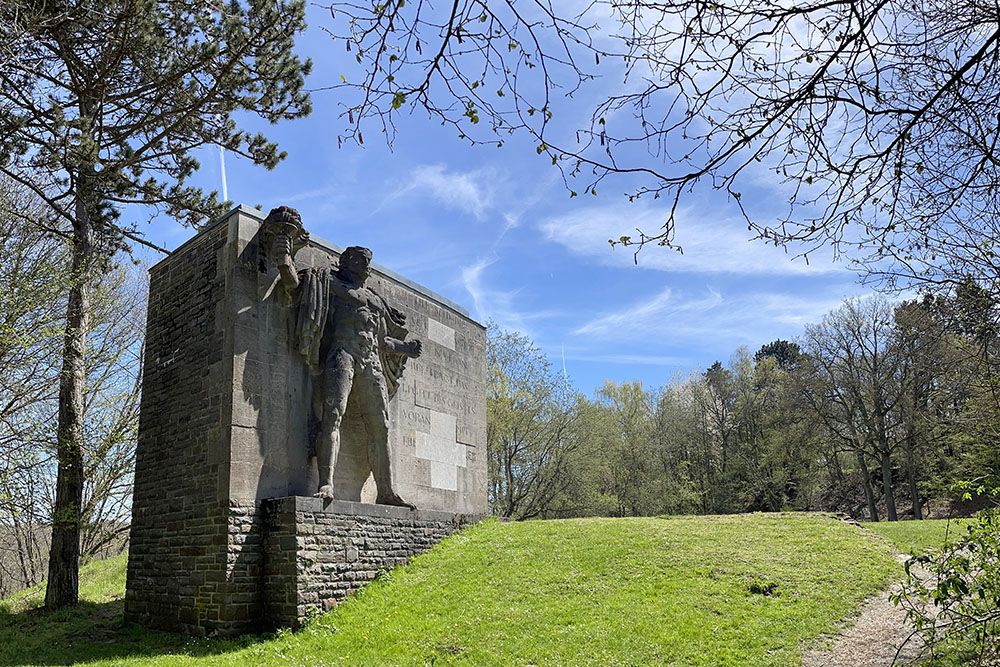
The Eifel
The Eifel is a picturesque, rolling region full of dense forests and picturesque towns steeped in history. The area stretches to the Rhine in the east and the Moselle in the south. The northern border of the Eifel is roughly at the level of the German city of Aachen. The easternmost parts of Belgium and Luxembourg are also part of the Eifel.
One of the main highlights of the Eifel region is its stunning natural beauty. Thanks to its diverse flora and fauna, crystal-clear lakes and breathtaking views, the Eifel is a paradise for outdoor enthusiasts. The area has something for everyone whether you’re an avid hiker, nature lover, or just looking for peace and quiet. In addition, the Eifel is also known for its mineral springs and thermal baths. For example, the thermal baths in Bad Münstereifel and Bad Bertrich are popular destinations for wellness enthusiasts.
For those who love history and culture, the Eifel region offers an abundance of sights. Like the town of Monschau with its well-preserved half-timbered houses and cobbled streets. It is as though time has stood still here. But you can also imagine yourself in times gone by when you visit the old castle ruins of Manderscheid or the impressive Nideggen castle. The city of Trier, with its rich Roman heritage, is another must-visit in the Eifel region. Its UNESCO World Heritage sites, such as the Porta Nigra and the imperial thermal baths, testify to the city’s historical significance.
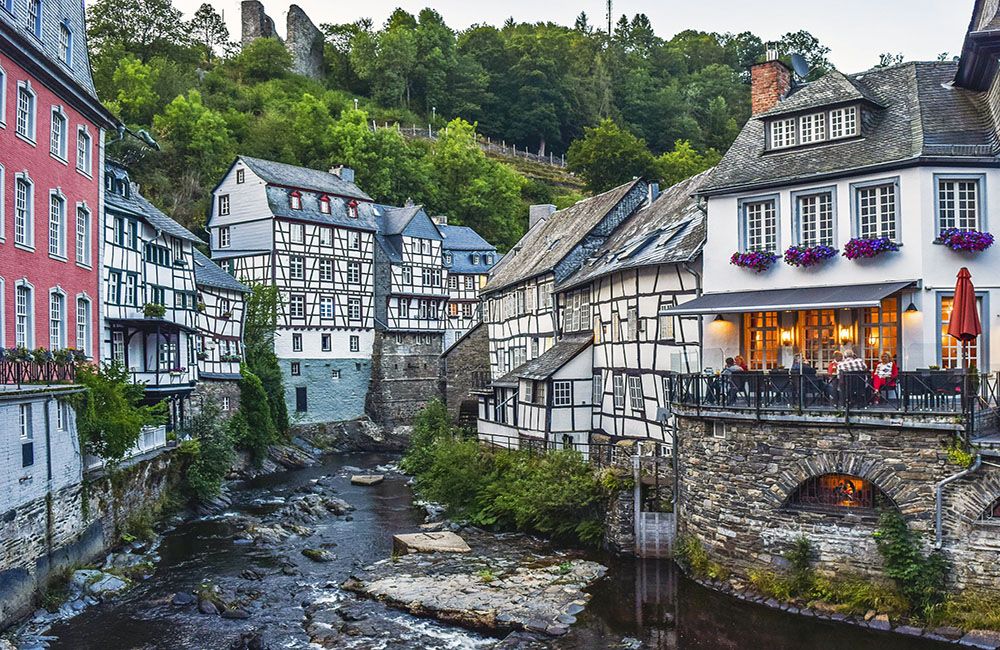
Second World War memorial sites in the Eifel
The Eifel, like the rest of Germany, went through a tumultuous period between 1933 and 1945. It began with the rise of the Nazis in 1933. Their political party, the NSDAP, increasingly influenced daily life in the Eifel region at a rapid pace. Propaganda played an important role during this time, with Nazi ideology seeping into all levels of society. At the same time, anti-Semitic sentiment grew, leading to the exclusion and persecution of Jewish residents. Many who did not support the regime lived in fear of being labelled enemies of the state.
The outbreak of World War II in 1939 cast a dark shadow over the Eifel. Its strategic location on the border with Belgium, Luxembourg and France made the region vital for military purposes. The Eifel’s peaceful landscape was transformed into fortified positions, military bases and training grounds. The local population faced major challenges during the war years. For instance, many were called up for military service. They then had to leave their families and risk their lives at the front. Then the Eifel became the battleground during the Allied invasion of Germany. On a large scale, parts of the once peaceful and beautiful landscape were destroyed during intense fighting.
Through lore, we know plenty of stories about what happened in our own country. But we know almost nothing about “their side of the story”. To change that, we visit some World War II memorial sites. We start where it all began in 1933. Namely at NS-Ordensburg Vogelsang, a former NSDAP training camp at Eifel National Park.
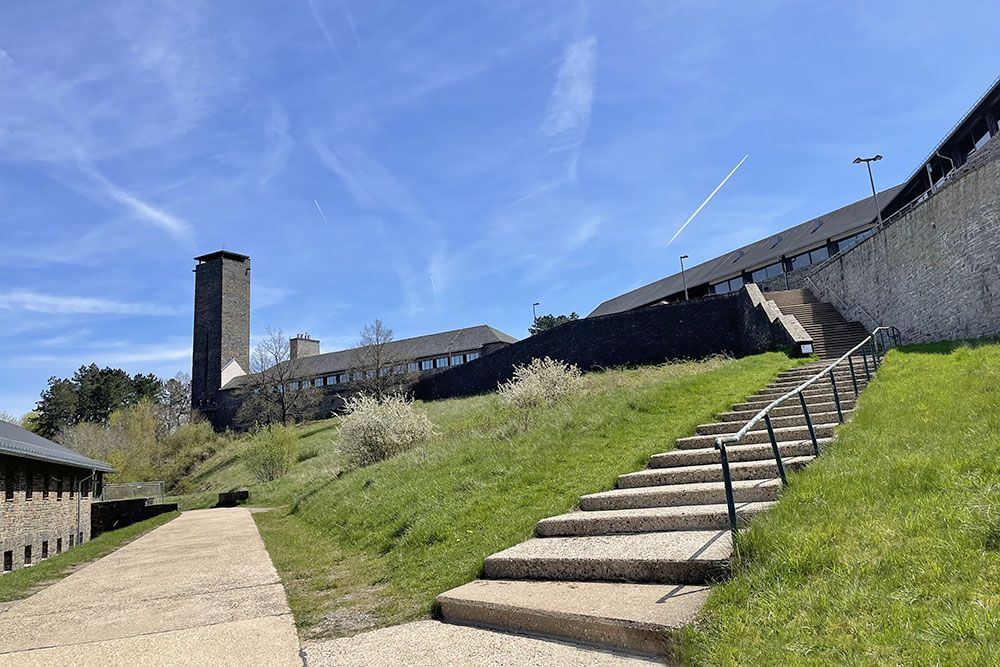
The Vogelsang complex in the Eifel National Park
Arriving just in time for our tour, we get to the first memorial site of our trip through the Eifel. The first thing we notice is the vast expanse of the complex. Just to cross the large car park alone takes us several minutes. So as not to be late for our booking, we have to hurry up. Once at the museum reception, we are welcomed by Marc Meyer, education officer at Vogelsang International Park (IP).
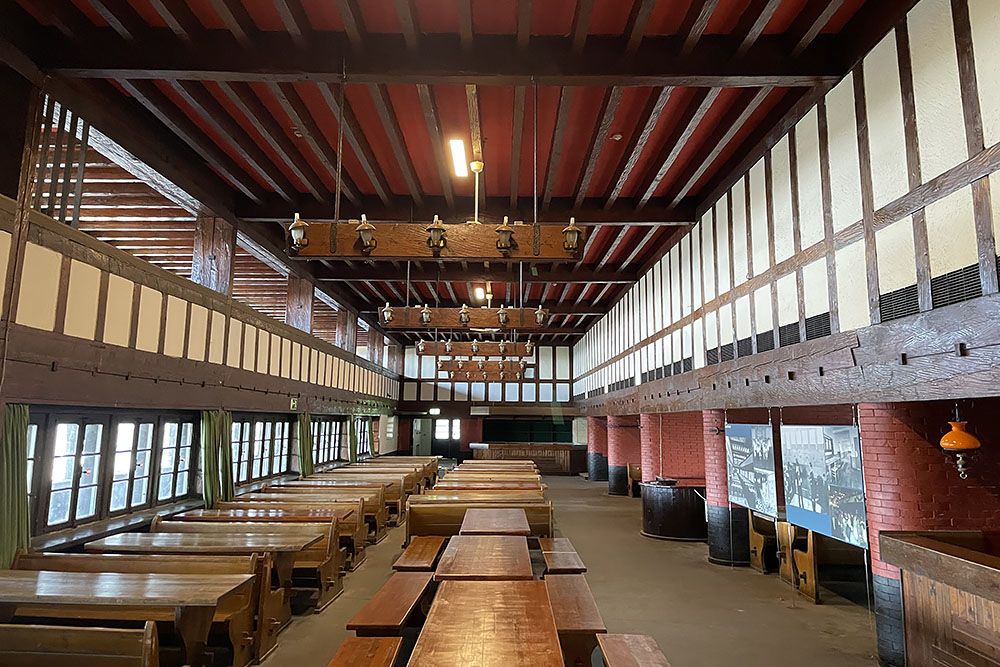
Before we get the actual tour, Marc takes us through history. He tells us that Vogelsang was built in 1933, when Hitler’s NSDAP came to power. Vogelsang was one of many “Ordensburgen” (schools of order) built throughout Germany. Only (young) male students from the Nazi elite organisation, the Hitler Jugend and the Deutsche Arbeitsfront were eligible for training. Students were subjected to an intensive curriculum that included physical training, military exercises, political education and racial ideology. The aim was to mould them into unconditional followers of the Nazi regime. And to prepare them for future leadership roles within the party and the state.
Our guide then takes us outside where we walk past several large and small buildings. The buildings are richly decorated with various symbols and propaganda images. Marc explains that these were meant to give extra reinforcement to Nazi ideology. Among other things, we pass the “House of Youth”, which symbolised the supposed continuity of the German race. And we pass the “House of Leadership”, which represented the supposed supremacy of the Aryan race. On one hand we are filled with horror but on the other hand, also with awe. Awe at the extremely sophisticated way the Nazi regime indoctrinated German youth.
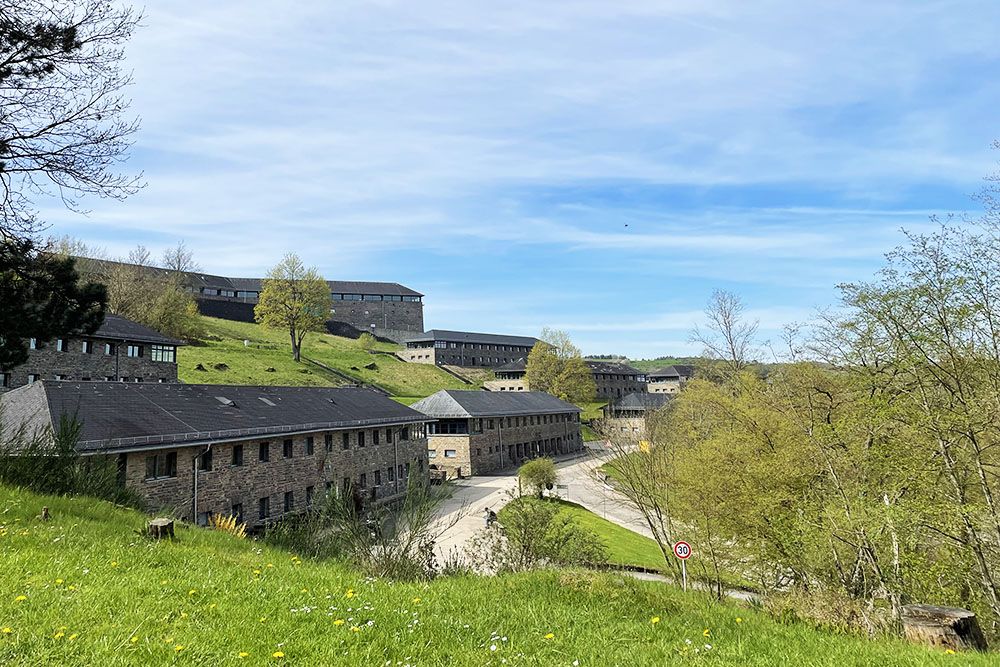
Vogelsang during and after World War II
During World War II, Vogelsang became an important training centre for the SS (Schutzstaffel). Here, people were prepared for brutality, indoctrination and eventually involvement in war crimes. The many black-and-white photographs in the building complex show high-ranking SS officers. Each one is a sombre reminder of Germany’s dark past.
After the war, Vogelsang became a military base for the British army. And later a Belgian military training ground that also became accessible to all NATO members. Only in 2006 was Vogelsang transformed into an educational centre and a memorial site. This with the aim of educating visitors about the history of National Socialism. But especially about the serious consequences of Nazi ideology. So that we do not forget but learn from the horrors of the past.
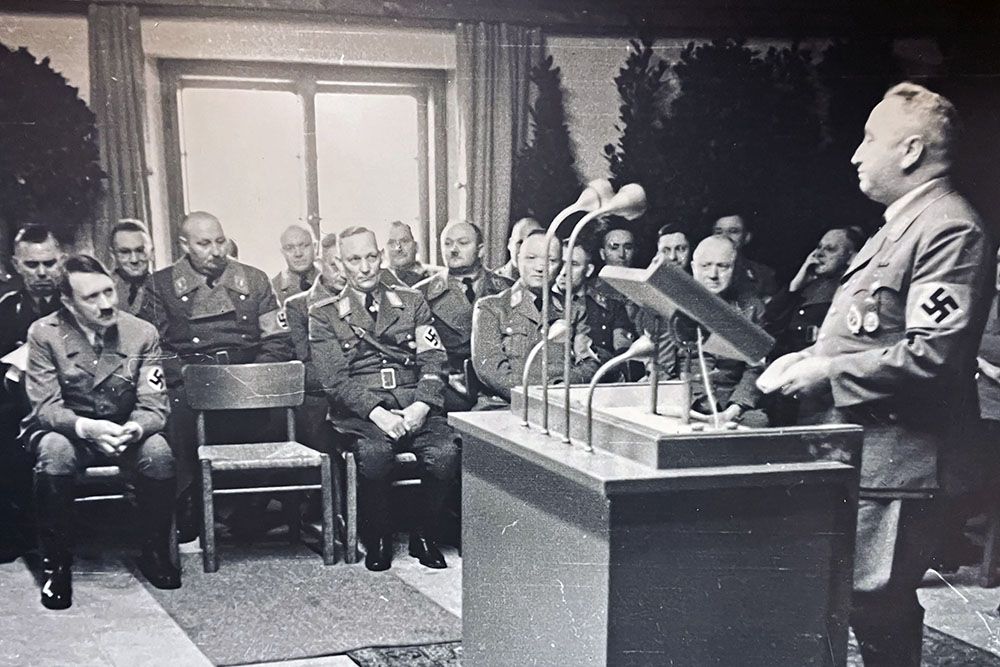
The immediate surroundings of Vogelsang IP
There is so much to see in and around the Vogelsang complex that you should set aside a full half-day for your visit. More interested in nature and hiking trails than in the history of the Vogelsang complex? Then the Vogelsang IP is also definitely worth a visit. This is because the former Nazi ideology training centre is ideally located on the Urft reservoir in the heart of the Eifel National Park. Today, the complex is also the visitor centre for nature lovers who want to visit the Eifel National Park. Directly from the visitor centre, many hiking trails lead through the beautiful, hilly forest landscape.
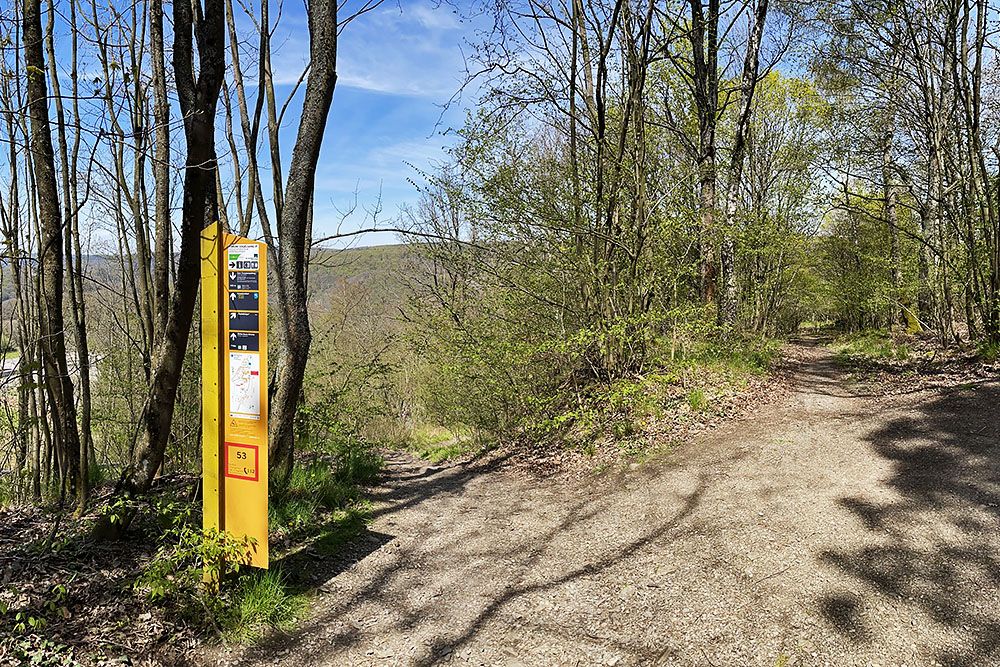
Hürtgenwald and environs
Our next memorial site of the Liberation Route through the Eifel is in Hürtgenwald. At the viewpoint “Jägerhaus” Hürtgenwald, we meet our guide Volker Lossner from FTB Adventures. The former army officer first teaches us the history of the place we are about to visit. In this area, many battles took place for four months from autumn 1944. The village of Schmidt was at stake. But to capture this village, the Americans first had to cross the Hürtgenwald. From a military point of view, the “Battle of Schmidt” was only a small part of the Allied advance. Yet the battle killed tens of thousands on both sides.
We first visit the Hürtgenwald itself. This forest is also known as the “Ghost Forest” because of its many legends and ghost stories. We witness no paranormal activity. However, we do get a good idea of how well prepared the German army was for the arrival of the Allies. For instance, the bunkers were virtually impregnable. And each bunker received exact locations of US forces via an ingenious communications system.
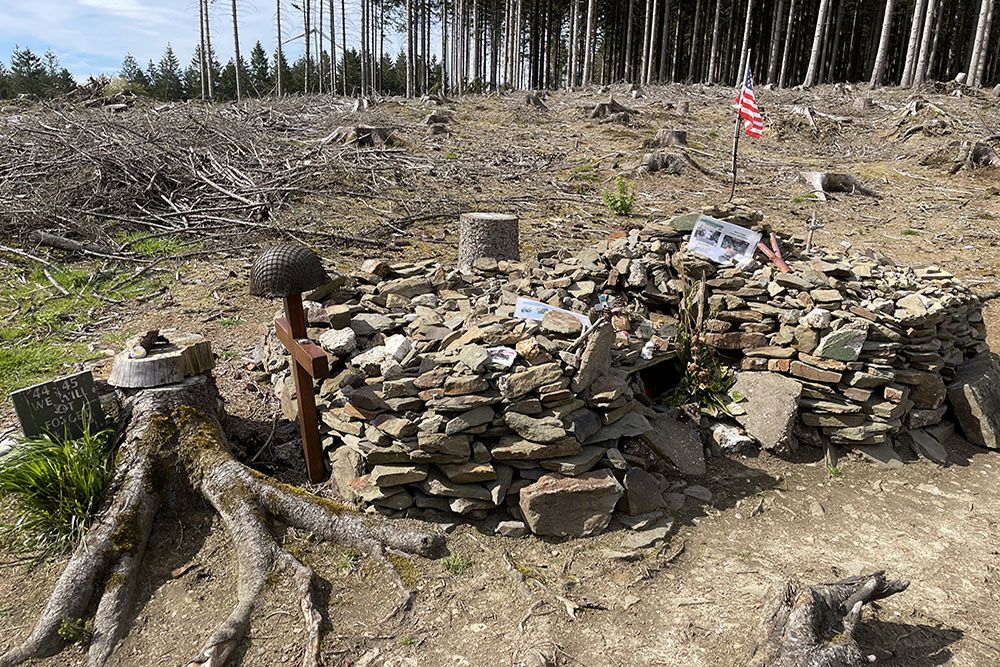
Hürtgenwald and environs
After our forest walk, we visit the German cemetery Vossenack. We then take a short walk through the rustic village of Vossenack. Little there to remind us of the fierce fighting. Except for the church, which we also briefly enter. There was even heavy fighting in this house of prayer.
From the village, we take another short walk through the beautiful, rolling countryside. Our guide Volker tells us that the trail is exactly the same route the Allies followed. The route is also known as the “Kall trail“. As the trail becomes narrower and narrower towards the valley, the Americans were driven into a trap. The soldiers had to retreat. The thought of walking along this same path now leaves a deep impression on us. Although the landscape looks particularly peaceful now, we get a good idea of how the soldiers probably experienced it.
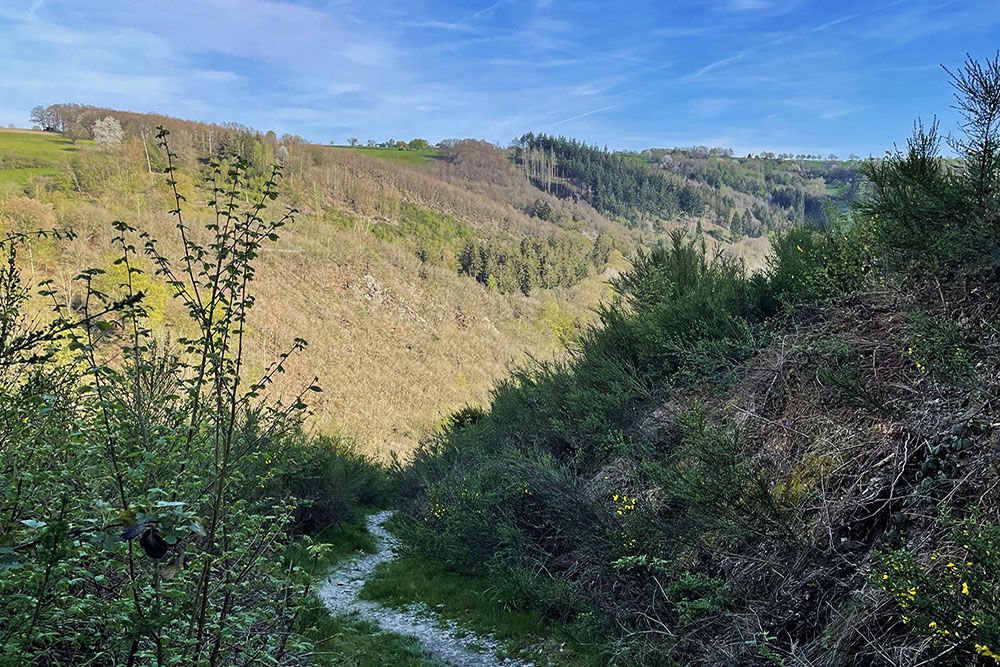
Remagen in Rhineland-Palatinate, the easternmost part of the Eifel
We conclude our particularly impressive journey along memorial sites in the Eifel region in Remagen. Located on the western bank of the Rhine, this town played a crucial role during World War II.
A key part in the battle was the Ludendorff Bridge over the Rhine. Few people were killed in the battle for the bridge. According to our guide Volker Theos, director of the Remagen Peace Museum, there were virtually no casualties. The Battle of Remagen was more like a desperate race against time. German attempts to destroy the famous bridge over the Rhine failed. The subsequent American presence on the eastern bank of the Rhine enabled a rapid advance towards Berlin.
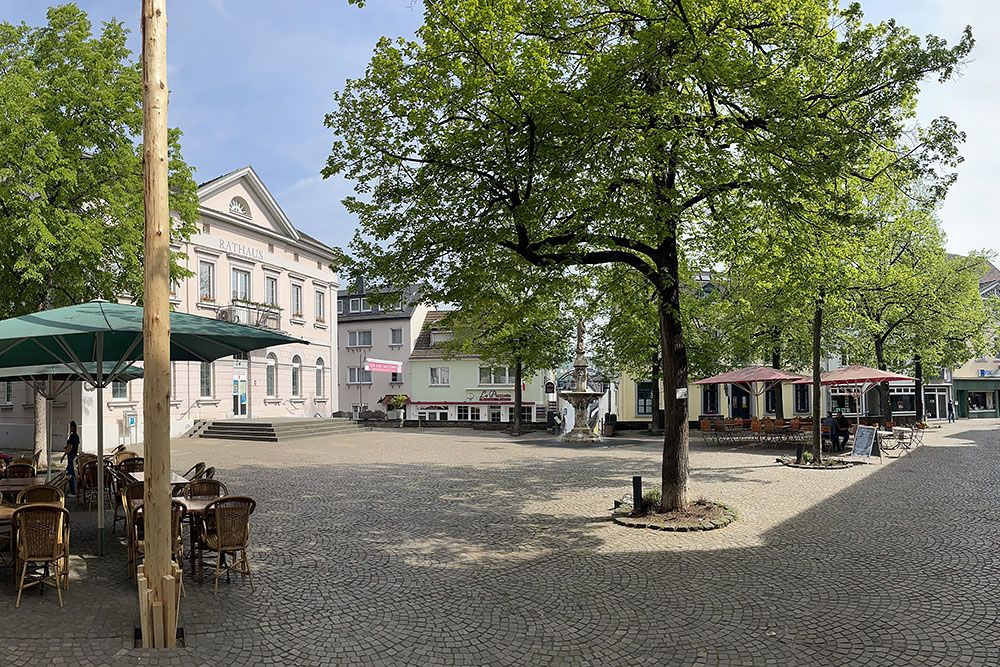
Volker takes us on a walk from Mount Pollinaris to the Ludendorff Bridge. It is the same route that a small group of Americans followed towards the bridge. Interesting to see are the large black-and-white photographs our guide shows us at various locations around the city. The photos show the street scene during the Battle of Remagen. Every house and street are instantly recognisable.
The final destination of our walk is the Remagen Peace Museum, located in the two towers of the former bridge. Here we learn all about the history of the bridge and its successful conquest. We also get an insight into the daily life of the soldiers who were responsible for guarding the bridge. There is also an exhibition dedicated to the temporary POW camp in Remagen. Here, thousands of POWs were imprisoned in appalling conditions. Our guide explains that to this day, this place is a kind of pilgrimage site for neo-Nazis. Every year, they try to take part in a memorial march to commemorate the deceased POWs of the temporary camp.
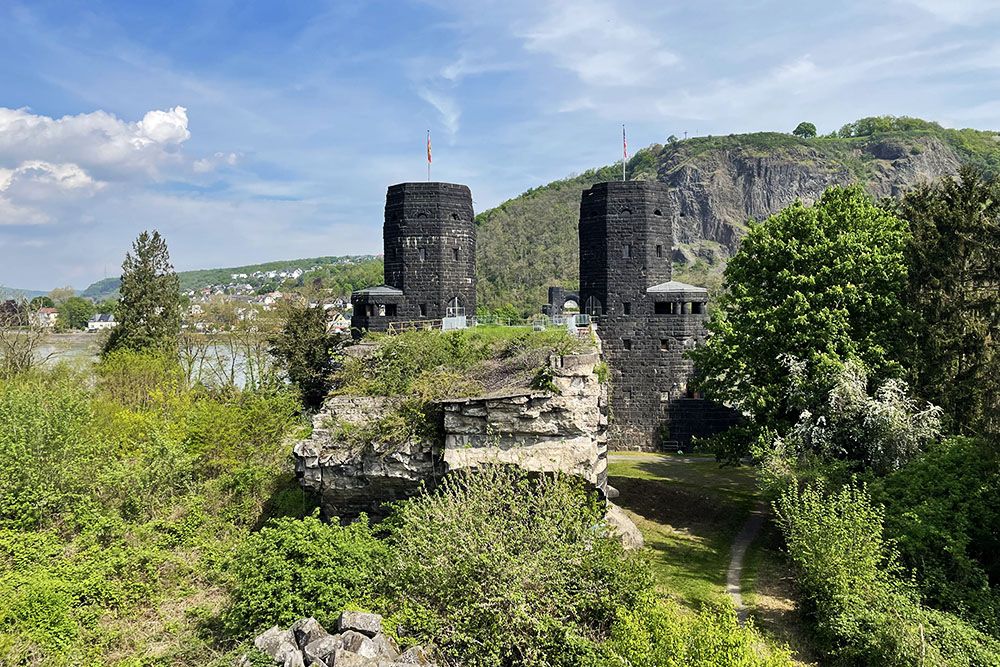
Other World War II memorial sites in the Eifel
Our visit to Remagen was the conclusion of an impressive journey through time. Impressive because we got a broader picture of this black page in the history books from a different perspective. During our trip, we went on many short walks. But there are even more walks in the Eifel past memorial sites to do.
The beauty of the Liberation Route Europe stages is that they largely follow existing tourist walking routes. But then supplemented with sights along the route related to World War II. They usually take you through beautiful natural landscapes. The Liberation Routes are therefore also worthwhile if you are not so interested in the (pre)war years in the Eifel.
We made the tour of World War II memorial sites through the Eifel at the invitation of Liberation Route Europe. We compiled the content of the blog independently and objectively based on our own impressions.
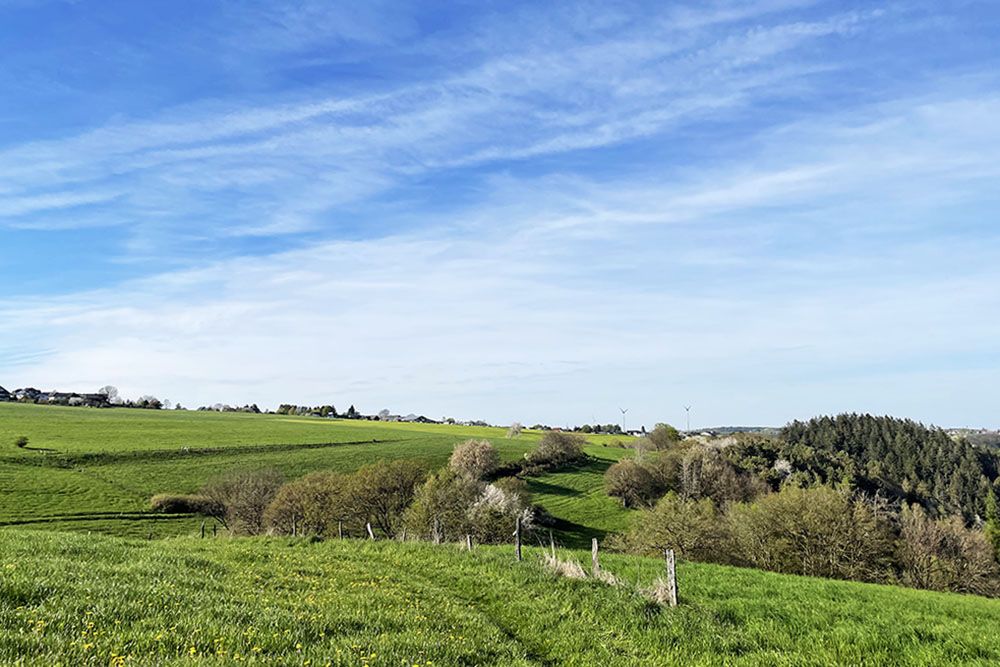
Frequently asked questions about World War II memorial sites in the Eifel
You can start the different stages of the Liberation Route at any location. And of course, you don't have to visit every location described in this blog. But if you want to keep the right chronological order, start at Vogelsang in the Eifel. Then go via Hürtgenwald to Remagen in the German Rhineland.
Plan at least three days for your visit to the locations in the Luxembourg and Belgian Ardennes described in this blog. Are you an avid hiker? Then plan for at least a week. Inspiration for hikes in the Eifel can be found here.
Travelling through the Eifel can be done all year round. If you mainly want to hike there, mid-April to October is a great period. But the Eifel is also a favourite destination in Germany in winter. For instance, you have some (small) ski resorts there. In addition, the famous Christmas market in Monschau is a popular attraction.
- In the Eifel National Park, there are many options for spending the night. Think holiday homes, hotels, bed & breakfasts, holiday parks and flats. We stayed at Neugrad during another trip to the Eifel: a small complex of 10 beautiful holiday homes. The houses are tastefully and modernly furnished. Downside: at the double holiday flat, the sleeping area is right under the roof. It can get quite warm there. Another big advantage of this accommodation is that you are within walking distance of the Vogelsang complex described in this blog. It is also an excellent base for various hiking routes through the Eifel National Park.
- In Hürtgenwald you will find ample accommodation, including some excellent hotels. We stayed at the historic Land-gut-Hotel Zum alten Forsthaus, a typical German family hotel: no fuss, basic but comfortable. And with swimming pool, sauna and a cosy bar.
- There is also plenty of choice in the Remagen area. Along the Rhine, both hotels and campsites can be found. For views of Remagen and its famous bridge, consider staying on the other side of the Rhine. For example, in the extremely atmospheric Om Maat.
Absolutely! But from a guide, of course, you get the full story. In addition, you may also go on a memorable, unforgettable walk with a guide. More information on the memorial sites described in this blog can be found via the links below:
- Vogelsang International Park
- Hürtgenwald: the Battle of Schmidt, the German cemetery Vossenack, the many mistakes the Americans made from a military point of view, the church of Vossenack and the Kall trail where the Americans ran into a trap
- Remagen: Ludendorff bridge and the Peace Museum
Liberation Route Europe is a route network of nearly 10,000 walking kilometres across Europe. The routes are the same as those walked by the Allies in the years 1943 to 1945. The walks pass by numerous historical sites and tell the stories from various perspectives about the last phase of World War II.

